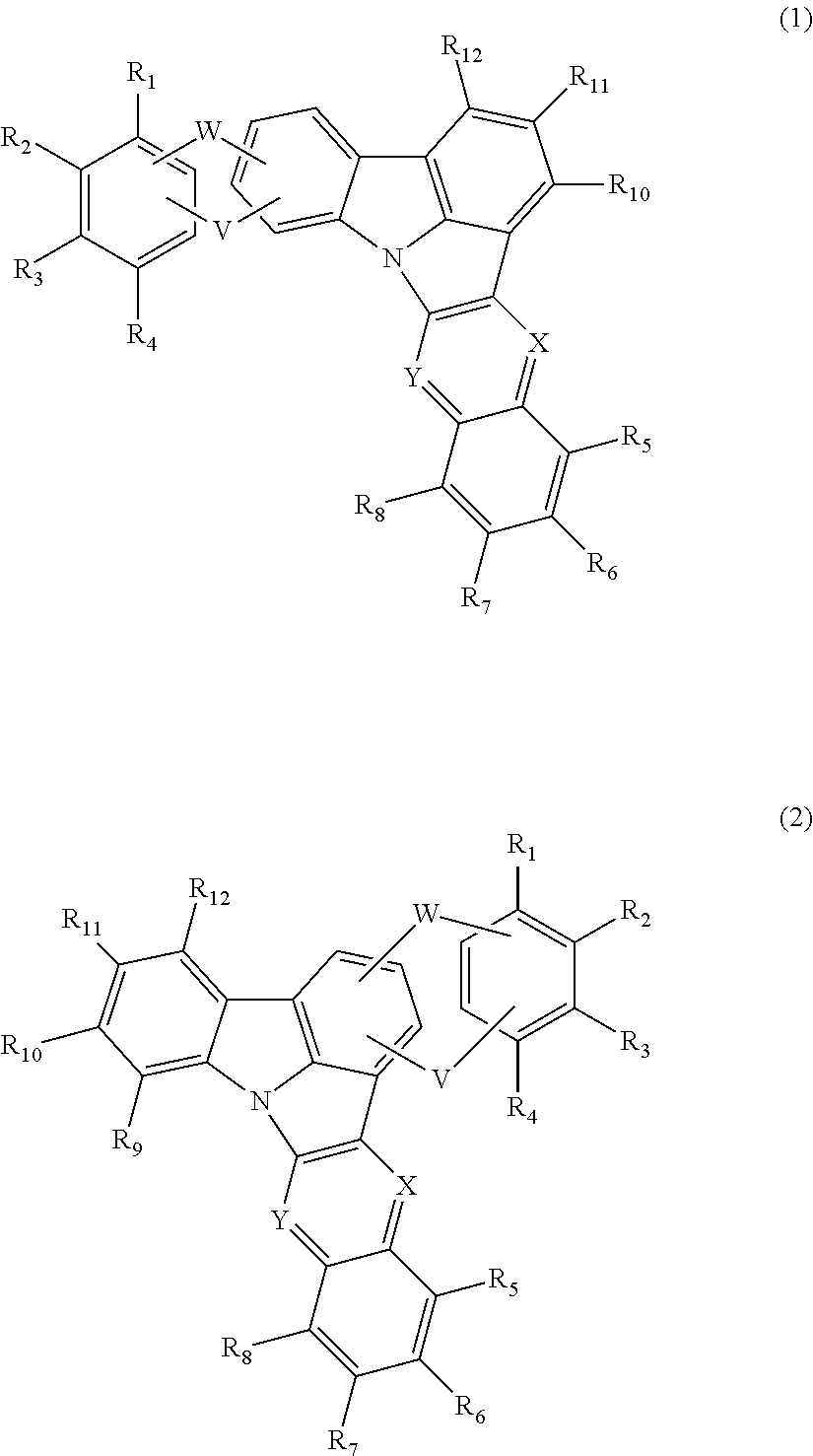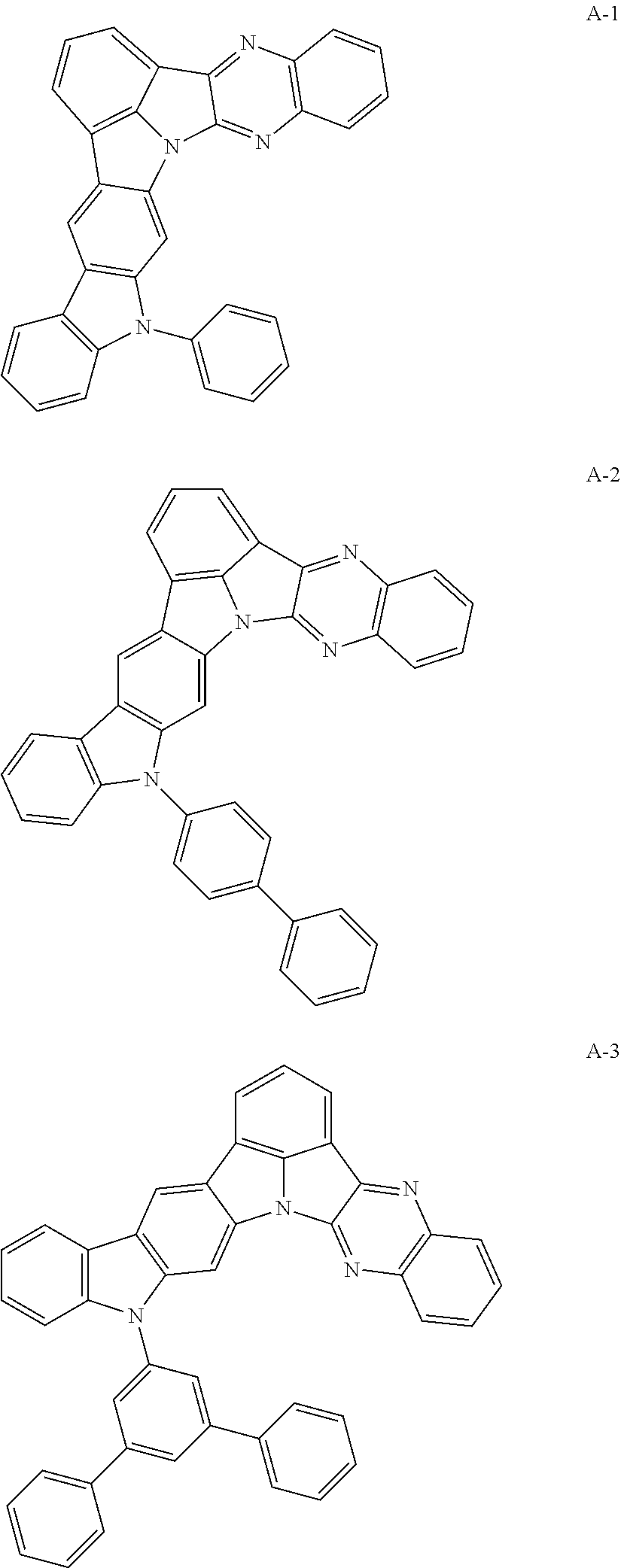An organic electroluminescent compound and an organic electroluminescent device comprising the same
an electroluminescent device and organic technology, applied in the direction of luminescent compositions, organic chemistry, chemistry apparatus and processes, etc., can solve the problems of short operational life of organic electroluminescent devices, reduced device life, and inability to improve luminous efficiency, etc., to achieve excellent current and power efficiency, improve driving lifespan, and reduce the effect of driving voltag
- Summary
- Abstract
- Description
- Claims
- Application Information
AI Technical Summary
Benefits of technology
Problems solved by technology
Method used
Image
Examples
example 1
DEVICE PRODUCTION OF AN OLED DEVICE USING THE ORGANIC ELECTROLUMINESCENT COMPOUND ACCORDING TO THE PRESENT INVENTION
[0078]An OLED device was produced using the organic electroluminescent compound according to the present invention. A transparent electrode indium tin oxide (ITO) thin film (10 Ω / sq) on a glass substrate for an organic light-emitting diode (OLED) device (Geomatec, Japan) was subjected to an ultrasonic washing with acetone, ethanol, and distilled water, sequentially, and was then stored in isopropanol. Next, the ITO substrate was mounted on a substrate holder of a vacuum vapor depositing apparatus. Compound HI-1 was introduced into a cell of said vacuum vapor depositing apparatus, and then the pressure in the chamber of said apparatus was controlled to 10−6 torr. Thereafter, an electric current was applied to the cell to evaporate the above introduced material, thereby forming a first hole injection layer having a thickness of 80 nm on the ITO substrate. Compound HI-2 ...
PUM
| Property | Measurement | Unit |
|---|---|---|
| pressure | aaaaa | aaaaa |
| thickness | aaaaa | aaaaa |
| thickness | aaaaa | aaaaa |
Abstract
Description
Claims
Application Information
 Login to View More
Login to View More - R&D Engineer
- R&D Manager
- IP Professional
- Industry Leading Data Capabilities
- Powerful AI technology
- Patent DNA Extraction
Browse by: Latest US Patents, China's latest patents, Technical Efficacy Thesaurus, Application Domain, Technology Topic, Popular Technical Reports.
© 2024 PatSnap. All rights reserved.Legal|Privacy policy|Modern Slavery Act Transparency Statement|Sitemap|About US| Contact US: help@patsnap.com










